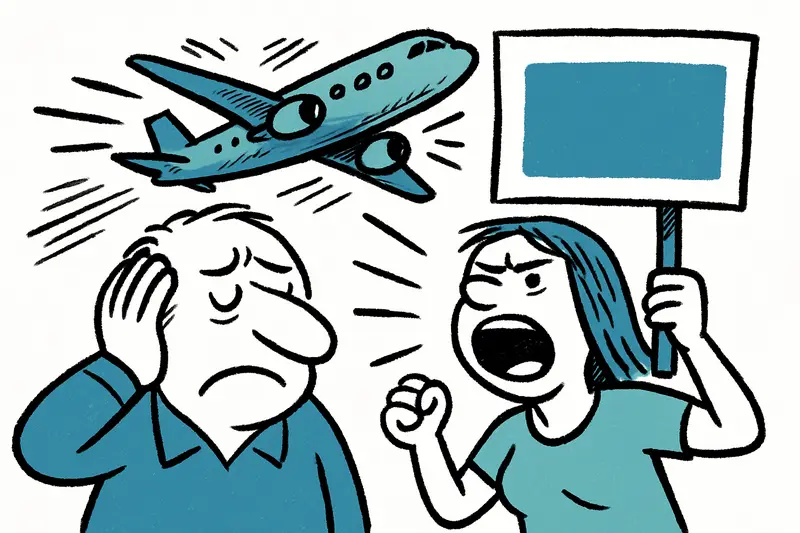Residents from flight paths around Palma airport protest against ongoing aircraft noise. Measurements show clearly elevated levels; residents demand quiet from 11 p.m. to 6 a.m.
“We can't sleep at night anymore”
Late Saturday morning, residents from the neighborhoods around Paseo de es Carnatge gathered for a spontaneous action. With simple measuring devices, stopwatches and plenty of patience, they counted takeoffs and landings – minute by minute, as many locals say. "At four o'clock in the morning our bedroom feels like a workshop," says María, who has lived on the coast for twelve years. You can hear it in the voices: tired, a bit irritated, but determined.
Measurements, complaints, health
The measurements presented by the initiative lie well above what many consider tolerable. In outer areas, peak values were measured that are several dozens of decibels above recommended night values. In bedrooms, residents report regularly measured values around 60–75 decibels; that demonstrably disrupts sleep rhythms. In total, almost 19,000 people in the affected neighborhoods are directly affected according to estimates.
The WHO recommends around 40 decibels for the night – the EU sets a rough guideline of 55 decibels. "With us this is regularly exceeded," says a spokesperson for the neighborhood group. The residents point to studies that link stress, high blood pressure and other health problems with chronic noise exposure.
What people are demanding
The core message of the protesters: no takeoffs and landings between 23:00 and 06:00. This is not a new demand; in many European cities quiet periods for airports already apply. The group emphasizes that it's not about stopping operations altogether, but about protecting the nighttime rest. Some tourists who happened to pass by nodded in agreement: "When I'm on vacation, I want to sleep – not stand at the airport," said a man with a suitcase.
Authorities, airport operator and next steps
Official bodies have been urged to present studies or initiate new measurement rounds. So far, according to the activists, there is no comprehensive long-term study on health effects of aircraft noise on the Balearics. Demands are now directed at city administration, the island government and the operator AENA.
What happens next is uncertain. Legal steps, petitions, and dialogue rounds are being discussed. And in the meantime, people here are trying to find their peace again – with earplugs, closed windows and the hope that night will soon be night again.
A local mood snapshot: The mood is factual, but tense. On the Plaza in front of a bar, older residents discussed retirement times, young parents about baby bottles in half sleep. There are no easy solutions – but it is a demand that calls for answers.
Similar News
Palma in Transition: Which Neighborhoods Are Seeing Income Soar
In parts of Palma, average incomes have risen significantly over the last ten years—especially where wealthy foreigners ...

After 30 Years: Retired Couple Leaves Mallorca – Rising Rents Push Them to the Mainland
After decades on the island, María and Paco must move to Alicante due to rising rents and dwindling pensions. A story ma...

Traffic Cameras in the Tramuntana: Tender Starts Soon
The island council plans to push ahead with the camera project on the Ma-10, which has been stalled for months, through ...

Court confirms right to Islam education in Mallorca schools
A court on the Balearic Islands has decided: parents can demand that Islam education is offered near their children at p...

Balearic Islands report more deadly accidents due to driver distraction
On the Balearic Islands, there are noticeably more deadly traffic accidents involving driver distraction. Police and the...
